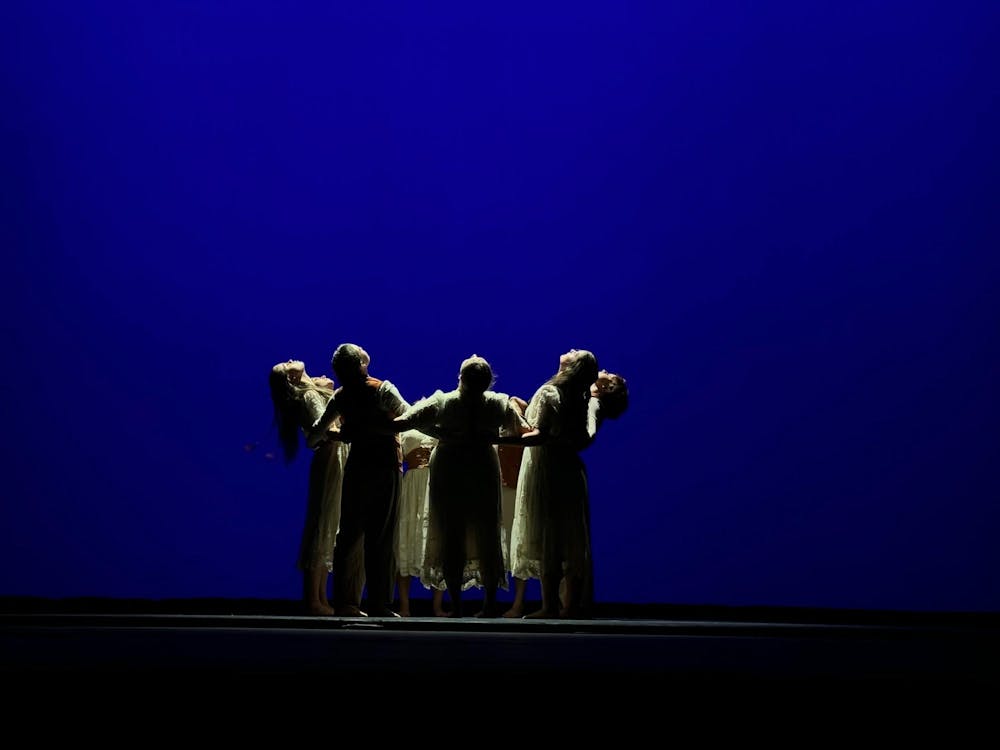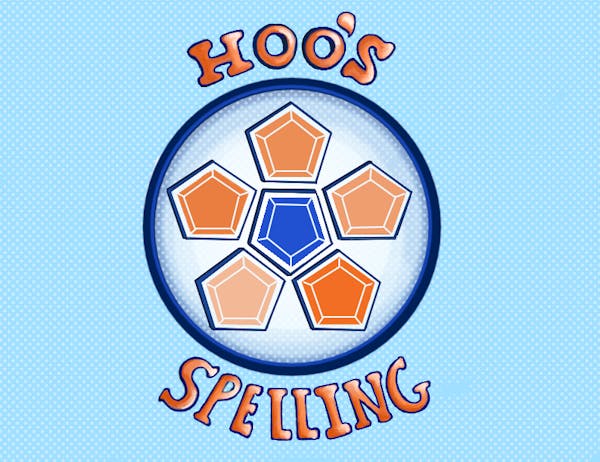As the semester draws to a close, the Drama Department prepares to present its annual Fall Dance Concert, running from Nov. 20-22 in the Culbreth Theatre. This semester’s production boasts the largest cast in the past decade, promising an eclectic performance shaped by the innovative artistic aims of each dancer and choreographer.
A staple of the autumn arts scene, the Fall Dance Concert has long distinguished itself through the department’s unique approach to choreography and preparation for the event, according to program and artistic director of dance & associate professor Kim Brooks Mata.
Given this approach, nonconformity and experimentation lie at the heart of this production. When asked about an overarching theme for the concert, Brooks Mata answered there was no predetermined one.
“The overarching ‘theme’ is coming together and generating and creating and seeing what bubbles up as a result of the collective creative process together,” Brooks Mata said.
The program will feature six contemporary-leaning pieces, four choreographed by undergraduate students and two by faculty members. The incorporation of faculty choreography is distinctive within the landscape of solely student-led dance organizations on Grounds, providing a unique opportunity for mentorship and collaboration across experience levels and dance backgrounds.
Each piece spans roughly 10 to 15 minutes, which is notably long for the dancers. While this initially felt daunting to dancers accustomed to three- or four-minute pieces, Brooks Mata explained that the extended duration often allows the work to reach a deeper, more resonant level.
“It's fun to be able to make work that can really develop into a world of its own,” Brooks Mata said. “And that takes time to be able to build and establish.”
The emphasis on time and natural development reflects the broader creative process within production. Students and faculty typically enter the choreography process with some idea of where they want to go, but ultimately the cast of dancers and collaborative process heavily influences the trajectory of each piece.
Fourth-year College student Elizabeth Moore, who will be performing in two faculty performances as well as choreographing her own, reflected on her experience working alongside faculty.
“It's awesome to be having a close up view to how they work and how they create movement, while at the same time getting to do it myself,” Moore said.
Brooks Mata echoed this, emphasizing that being able to watch adults work through creative blocks and kinks sets an important precedent for the undergraduate choreographers.
“It gives students permission to understand that the creative process isn't necessarily linear, and that they have room to experiment,” Brooks Mata said. “All of those rehearsals where you're trying things out and they just don't work lead you to where you get in the end. It's all a part of the process.”
In fact, Moore draws the inspiration for her piece from a class titled DANC 4640, “Somatic Practices and Research” taught by Brooks Mata that was based on the Laban/Bartenieff Movement Studies System — a somatic framework for observing and analyzing human movement. The system focuses on forming an understanding of the interconnected components of movement — body, space, shape and effort — and looking at the body as a whole, seeing how a change in one aspect initiates change in another.
Moore’s contemporary piece, a trio titled “Suspended Tension,” focuses on the concept of dis-affinities, the idea of an absence of connection, attraction or affinity to things or people. Moore explained that she rehearses early in the mornings, which she has seen shape some of the piece’s movement as well as her perception of it.
“I'm exploring the off-balance or off-kilter way movement can appear on the stage,” Moore said.
The rest of the program follows this thread of experimentation, with each piece investigating its own distinct movements and themes.
Faculty dance lecturer Demetia Hopkins’ piece titled, “Remnants of Blue” draws on the blues, hybridizing movement material from jazz, ballet, modern and contemporary traditions. The remaining works, largely situated in the contemporary realm, experiment with a range of eclectic thematic elements. One piece title “-hyphen-”, choreographed collaboratively by two students, even incorporates improvisation and projected visual installation, bringing two distinctly unconventional components into the concert.
Brooks Mata’s piece is closely related to modern, post-modern and contemporary work, and experiments with release technique — a dance form focusing on developing awareness and freedom of movement by releasing muscle tension.
Brooks Mata spoke on her experience working with the dancers, noting how she enjoys challenging them to step out beyond their trained movement habits and expose themselves to different ways of shifting and releasing their weight.
“Each of them brings something very different and unique into that space, and getting to create and mold and make around that is a real gift,” Brooks Mata said.
Despite the individuality of both the dancers and the choreographic ideas, she noted that this semester’s works have naturally begun to converge around ideas of resilience, discovery and collaboration — themes that now function as an organic through line for the concert.
Brooks Mata emphasized that she welcomes the idea of people coming to see something they didn’t anticipate, urging people to not attempt to see the program as strictly narrative dance, but as something more personal and open.
“Allow yourself to consider it like poetry,” Brooks Mata said. “Just allowing the work to wash over you, allowing yourself to feel what you're feeling, connect to the work in your own unique way and hopefully from that, you are left with impressions that you take with you.”







